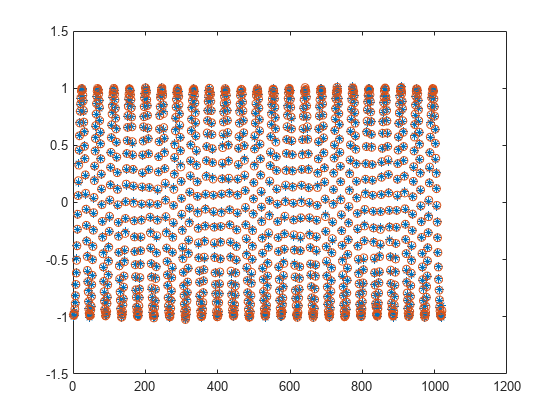dsp.IFFT
Inverse discrete Fourier transform (IDFT)
Description
The dsp.IFFT
System object™ computes the inverse discrete Fourier transform (IDFT) of the input. The object
uses one or more of the following fast Fourier transform (FFT) algorithms depending on the
complexity of the input and whether the output is in linear or bit-reversed order:
The dsp.IFFT object and the ifft function both compute the inverse discrete Fourier transform (IDFT) of the
input. However, the object can process large streams of real-time data and handle system
states automatically. The function performs one-time computations on data that is readily
available and cannot handle system states. For a comparison between the two, see System Objects vs MATLAB Functions.
To compute the IFFT of the input:
Create the
dsp.IFFTobject and set its properties.Call the object with arguments, as if it were a function.
To learn more about how System objects work, see What Are System Objects?
Creation
Description
ift = dsp.IFFTIFFT object, ift, that computes the IDFT
of a column vector or N-D array. For column vectors or N-D arrays, the
IFFT object computes the IDFT along the first
dimension of the array. If the input is a row vector, the IFFT object computes a row of single-sample IDFTs and issues a
warning.
ift = dsp.IFFT(Name,Value)IFFT object, ift, with
each property set to the specified value. Enclose each property name in single quotes.
Unspecified properties have default values.
Properties
Usage
Syntax
Description
Input Arguments
Output Arguments
Object Functions
To use an object function, specify the
System object as the first input argument. For
example, to release system resources of a System object named obj, use
this syntax:
release(obj)
Examples
Algorithms
This object implements the algorithm, inputs, and outputs described on the IFFT block reference page. The object properties correspond to the block
parameters, except the Output sampling mode parameter is not supported by
dsp.IFFT.
References
[1] FFTW (https://www.fftw.org)
[2] Frigo, M. and S. G. Johnson, “FFTW: An Adaptive Software Architecture for the FFT,” Proceedings of the International Conference on Acoustics, Speech, and Signal Processing, Vol. 3, 1998, pp. 1381-1384.
Extended Capabilities
Version History
Introduced in R2012a
